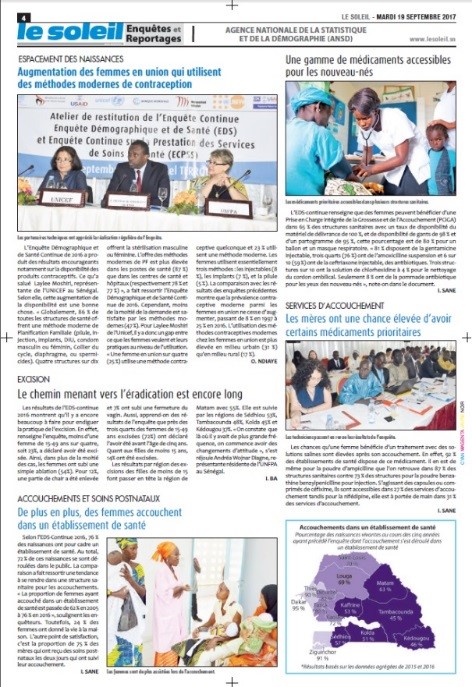Luminare: The Senegal Continuous Survey
This blog post is part of Luminare, our new blog series exploring innovative solutions to data collection, quality assurance, biomarker measurement, data use, and further analysis.
Two needs are often expressed by both DHS host countries and donors: 1) for data to be made available more frequently, and 2) for the continued strengthening of implementing agencies’ capacity to conduct surveys. Among various innovations that The DHS Program has pursued to respond to these needs is the Continuous Survey (CS) model.
What is a Continuous Survey?
In a CS, data are collected and reported annually by a permanently maintained office and field staff. A smaller sample size is designed to provide estimates at the national level and for urban/rural residence every year. For regional-level estimates, data are pooled over multiple consecutive phases. Through both the smaller sample and continuously maintained staff, the model can lower costs and institutionalize the implementing agency’s ability to conduct a DHS survey. In 2004, Peru became the first country to conduct a CS, and the effort is still ongoing.
How did Senegal implement a Continuous Survey?
Inspired by the Peru experience, USAID and The DHS Program piloted the CS model in Africa. Senegal was chosen for its long survey history and the capacity of the local implementing agency, Agence Nationale de la Statistique et la Démographie (ANSD). The Senegal Continuous Survey (SCS) expanded on the original model to include an annual facility-based Continuous Service Provision Assessment (C-SPA), in addition to the household-based Continuous Demographic and Health Survey (C-DHS). The SCS was conducted in five phases, spanning the period from 2012 to 2018.

Covers from final reports from each of the five phases of the SCS.
What were the successes and challenges of the SCS?

ANSD partnered with Le Soleil newspaper to create an 8-page spread highlighting results from the 2016 SCS.
The SCS demonstrated many successes. Senegal is the only country in Africa to annually collect nationally representative demographic and health data, allowing Senegal to monitor progress towards the SDGs every year. This was also the first time a country releases both facility and household data at the same time. This model of releasing C-SPA data annually and in conjunction with the C-DHS resulted in flourishing data use for both surveys.
The SCS greatly strengthened capacity in Senegal. ANSD is now capable of conducting DHS and SPA surveys with only limited technical assistance. ANSD has the initiative to move beyond the pilot to implement the 2018 SCS with limited technical assistance and is already continuing the annual surveys.
Most surveys encounter challenges, and, in the Senegal experience, CS-specific design challenges emerged. Some stakeholders were concerned about the approach of pooling two consecutive years of CS data to generate a large enough sample size for regional-level estimates. Additionally, a census and an updated health facility master list in Senegal during the SCS pilot period resulted in new sampling frames for both the C-DHS and the C-SPA, and subsequent challenges in data interpretation. Finally, survey dissemination activities overlapped with the next phase’s design and implementation activities, increasing the burden on ANSD.

The CS model demands an overlap of activities. While one phase moves toward dissemination, planning is already occurring for the next phase of data collection, as evidenced in the SCS pilot experience.
Lessons learned from the SCS experience will inform The DHS Program’s continued efforts to innovate in the areas of data collection and use.

